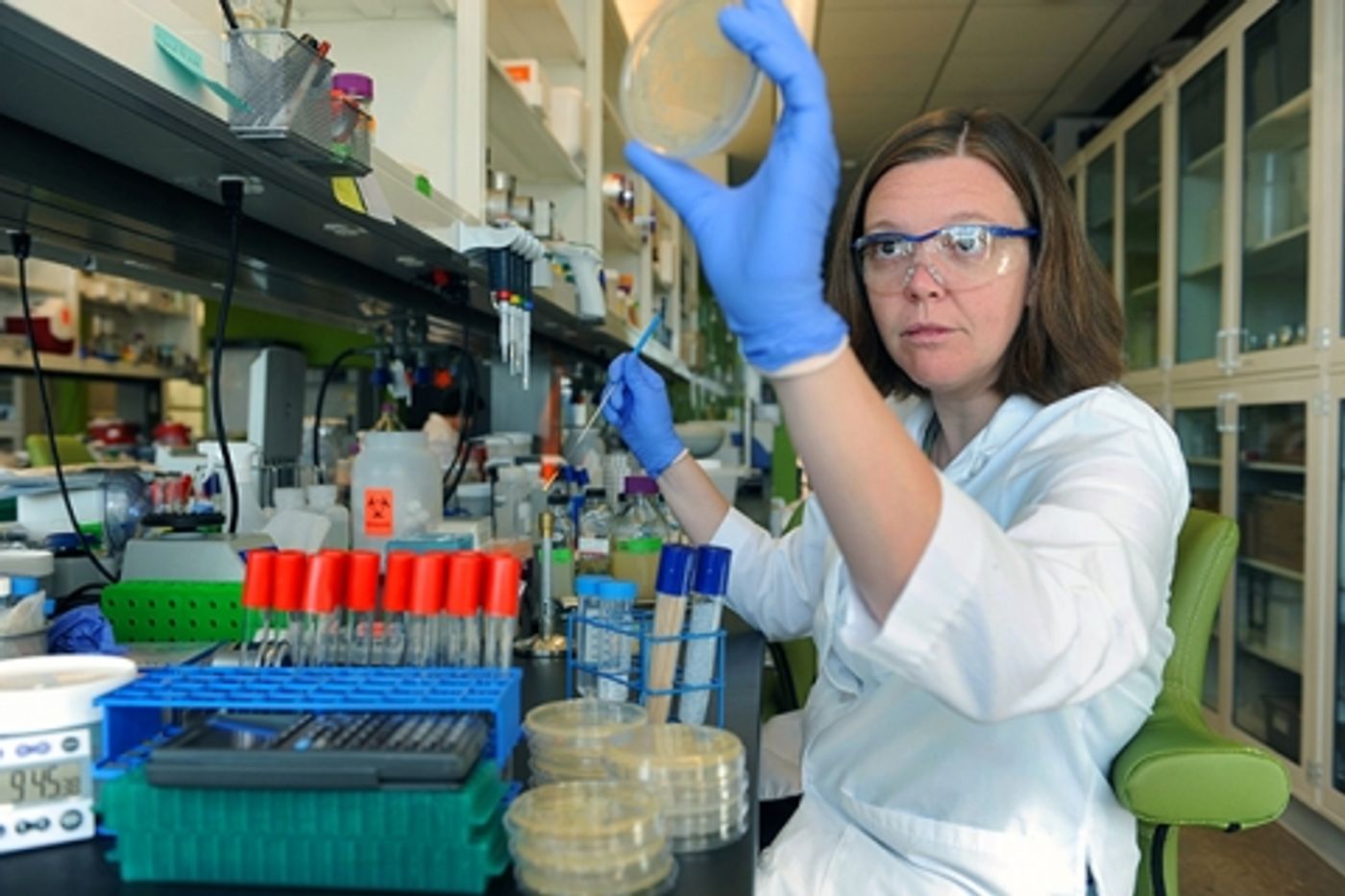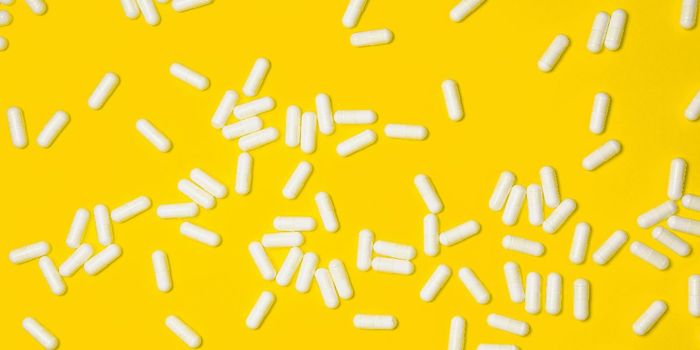Bacillus subtilis is one of the most commonly studied bacteria in the world, ubiquitous in almost every type of soil in the United States. This bacterium is considered a “benign organism” by the
EPA since it does not cause disease in humans, animals, or plants. So why study
B. subtilis if it does not pose a threat to us? Not only is it harmless, but some of its unique qualities could actually provide clinical therapeutic options like antibiotics, anti-cancer drugs, and more.
 Microbiologist Dr. Elizabeth Shank
Microbiologist Dr. Elizabeth Shank leads a lab of six researchers at the University of North Carolina at Chapel Hill, with their investigations all revolving around
B. subtilis. The overarching themes that Shank and her group aim to understand are how bacteria signal through secreted chemical compounds and what impact these interactions have on neighboring microbes.
Shank studies
B. subtilis because of its unique ability to differentiate into different cell fates depending on signals from neighboring bacteria, reminiscent of the way that human body cells differentiate during early development. She explains it like this: “In humans, cellular differentiation may result in muscle cells, liver cells, or brain cells; in
B. subtilis, differentiation can result in the formation of environmentally resistant spores, biofilms (bacterial cells stuck to a surface), or swimming cells.”
Since many scientists have studied and currently study
B. subtilis, a lot is known about how it regulates its physiology and metabolism. Shank says that the availability of resources makes it “easy to do genetics and knock out genes.” This manipulation of bacterial genetics is a great way to see which regulatory pathways get activated and turn on the different cell fates that
B. subtilis is capable of reaching.
Shank’s lab has been capitalizing on the opportunity to look for signals from other bacteria in the soil that stimulate or inhibit
B. subtilis’ ability to differentiate into multiple different cell fates. One project in the Shank lab consists of finding metabolites produced by soil bacteria that affect sporulation in
B. subtilis. Identifying such chemical signals could have clinical therapeutic applications if they also affect the behavior of important pathogens that sporulate, such as
Clostridium difficile.
C. difficile is a bacterium that causes many healthcare-associated infections, causing diarrhea, fever and other medical problems, and is often associated with antibiotic resistance (
CDC). Thus, Shank suggests the possibility that manipulating the biology of bacteria may be useful in the clinic. “We can find ways that don’t just kill, but actually change the behavior of bacteria,” Shanks says. If we can find compounds that don’t alter the ability of
C. difficile to exist somewhere but prevent it from forming toxins, people aren’t going to get sick, even if it’s present.” The biological manipulation that Shank is suggesting would reduce the risk of increasing bacterial resistance and yield positive therapeutic outcomes.
These studies could also lead to the discovery of new antibiotics. “70% of the antibiotics used in the clinic are actually from bacteria,” Shank reminds us.
In addition, bacterial compounds can also act as anti-cancer or anti-fungal drugs. However, Shank also points out that “bacteria don’t get cancer – they’re doing something else with these metabolites.” This information is useful because it means that in her lab, researchers can indirectly screen for these helpful metabolites by screening for compounds that may also stimulate sporulating or biofilm formation. Again,
B. subtilis is the perfect agent to do these screens because a lot is known about its genetics and how it differentiates.

Currently, Shank’s lab is working on expanding their soil screens, looking for organisms in the dirt that impact
B. subtilis differentiation. Using a laboratory technique called mass spectrometry, Shank can obtain spatial pictures of how compounds are distributed across bacteria growing on a surface, allowing her group to identify novel metabolites that bacteria produce when they are growing together. In addition, her lab uses a transparent soil system to visualize better how the bacterial communities are interacting. “Bacteria are extremely tiny, so we need to view them at the scale at which they truly live,” Shank explains.
Ultimately, Shank’s research projects on the impact of chemical signals in the microbial soil community of
B. subtilis are very promising. A lot of scientists study
B. subtilis, but most are interested in internal regulation of its genes and proteins. Shank is able to find a “nice niche” where her group not only has plenty of tools with which to study
B. subtilis but also room to breathe while focusing on their unique projects. While most of her group is performing basic science aimed at trying to dissect the details of these bacterial interactions in the natural world, Shank also has an exciting opportunity to find novel, potentially life-changing metabolites for use in the clinic. Even if
B. subtilis were to interact with something in the lab that it doesn’t normally see in nature, if the experiment produces a useful compound with therapeutic qualities, then the experiment would be a success. There are many things to look forward to as Shank and her lab continue their research in this area.










